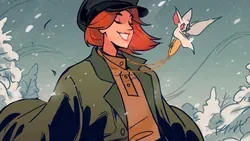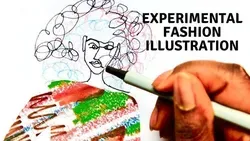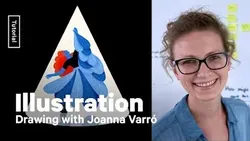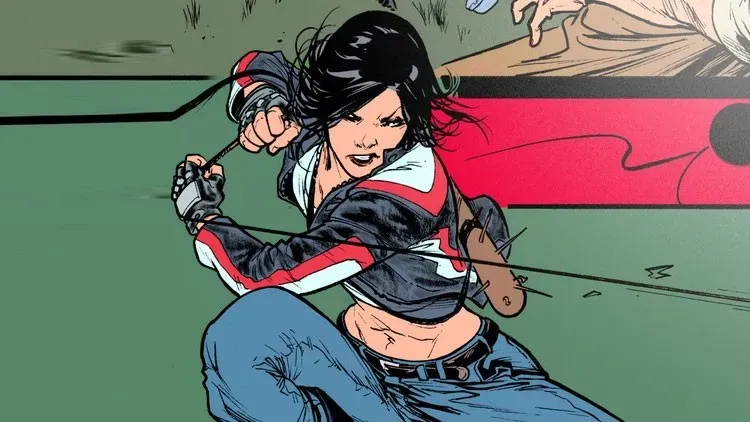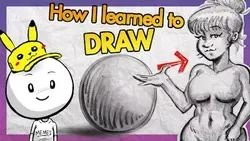
Learn How to Draw! Fun & Easy Exercises for Nailing Proportion Shading and More

This course, taught by full-time illustrator Brooke Glaser, is designed to help beginners learn the basics of drawing. Through fun and easy exercises, students will learn how to master proportion, shading, and more. With practice, anyone can become a skilled artist.▼
Course Feature
![]() Cost:
Cost:
Free Trial
![]() Provider:
Provider:
Skillshare
![]() Certificate:
Certificate:
No Information
![]() Language:
Language:
English
![]() Start Date:
Start Date:
On-Demand
Course Overview
❗The content presented here is sourced directly from Skillshare platform. For comprehensive course details, including enrollment information, simply click on the 'Go to class' link on our website.
Updated in [March 06th, 2023]
Brooke Glaser, a full-time illustrator, is offering a course on how to draw. In this course, Brooke will share the techniques she uses to draw proportions quickly and accurately, tips for getting in the 'zone' of drawing, and will dive deep into shading. Brooke will discuss the different types of shadows, where to place them and different tricks for drawing them digitally. This course is perfect for those who are new to drawing, as Brooke will demonstrate the examples entirely in Procreate. Brooke also encourages students to follow her on Instagram to see what she is working on now, and to join her e-mail list for art tips, in person meet ups and workshops, and other resources for artists.
[Applications]
Those who have taken this course can apply the techniques they have learned to create their own drawings. They can use the tips for getting in the 'zone' of drawing and the different types of shadows to create more realistic drawings. Additionally, they can follow Brooke Glaser on Instagram to stay up to date with her work and join her e-mail list to receive art tips, in person meet ups and workshops, and other resources for artists.
[Career Paths]
1. Illustrator: Illustrators create visual representations of ideas, stories, and concepts. They use a variety of mediums, such as pencil, ink, paint, and digital tools, to create artwork for books, magazines, advertisements, websites, and more. Illustrators must have a strong understanding of composition, color theory, and design principles. As technology advances, illustrators are increasingly using digital tools to create artwork, and the demand for digital illustrators is growing.
2. Animator: Animators create moving images using a variety of techniques, such as hand-drawn animation, computer-generated imagery (CGI), and stop-motion animation. Animators must have a strong understanding of motion, timing, and storytelling. As technology advances, animators are increasingly using digital tools to create animation, and the demand for digital animators is growing.
3. Concept Artist: Concept artists create visual representations of ideas, stories, and concepts. They use a variety of mediums, such as pencil, ink, paint, and digital tools, to create artwork for films, video games, and other media. Concept artists must have a strong understanding of composition, color theory, and design principles. As technology advances, concept artists are increasingly using digital tools to create artwork, and the demand for digital concept artists is growing.
4. Comic Artist: Comic artists create visual representations of stories and concepts. They use a variety of mediums, such as pencil, ink, paint, and digital tools, to create artwork for comic books, graphic novels, and other media. Comic artists must have a strong understanding of composition, color theory, and design principles. As technology advances, comic artists are increasingly using digital tools to create artwork, and the demand for digital comic artists is growing.
[Education Paths]
1. Bachelor of Fine Arts (BFA): A Bachelor of Fine Arts degree is a four-year program that focuses on the development of artistic skills and techniques. Students learn about the fundamentals of drawing, painting, sculpture, and other forms of visual art. They also learn about art history, color theory, and design principles. This degree is ideal for those who want to pursue a career in the visual arts, such as illustration, graphic design, or animation.
2. Master of Fine Arts (MFA): A Master of Fine Arts degree is a two-year program that focuses on the development of advanced artistic skills and techniques. Students learn about the history of art, color theory, and design principles. They also learn about the business side of the art world, such as marketing and promotion. This degree is ideal for those who want to pursue a career in the visual arts, such as illustration, graphic design, or animation.
3. Master of Arts in Art Education (MAE): A Master of Arts in Art Education is a two-year program that focuses on the development of teaching skills and techniques. Students learn about the fundamentals of art education, such as curriculum development, assessment, and classroom management. They also learn about the history of art, color theory, and design principles. This degree is ideal for those who want to pursue a career in art education, such as teaching in a school or museum.
4. Doctor of Philosophy in Art Education (PhD): A Doctor of Philosophy in Art Education is a four-year program that focuses on the development of advanced teaching skills and techniques. Students learn about the history of art, color theory, and design principles. They also learn about the business side of the art world, such as marketing and promotion. This degree is ideal for those who want to pursue a career in art education, such as teaching in a school or museum.
Pros & Cons
-

Clear teaching style
-

Easy to follow
-

Encouraging
-

Professional visuals and voice
-

Easy to understand
-

Great tips and tricks
-

Brilliant teaching style
-

Valuable gift
-

None mentioned
Course Provider

